The tartrate boomerang reaction
An opaque orange solution turns a translucent blue, and like a boomerang returns to opaque orange again.
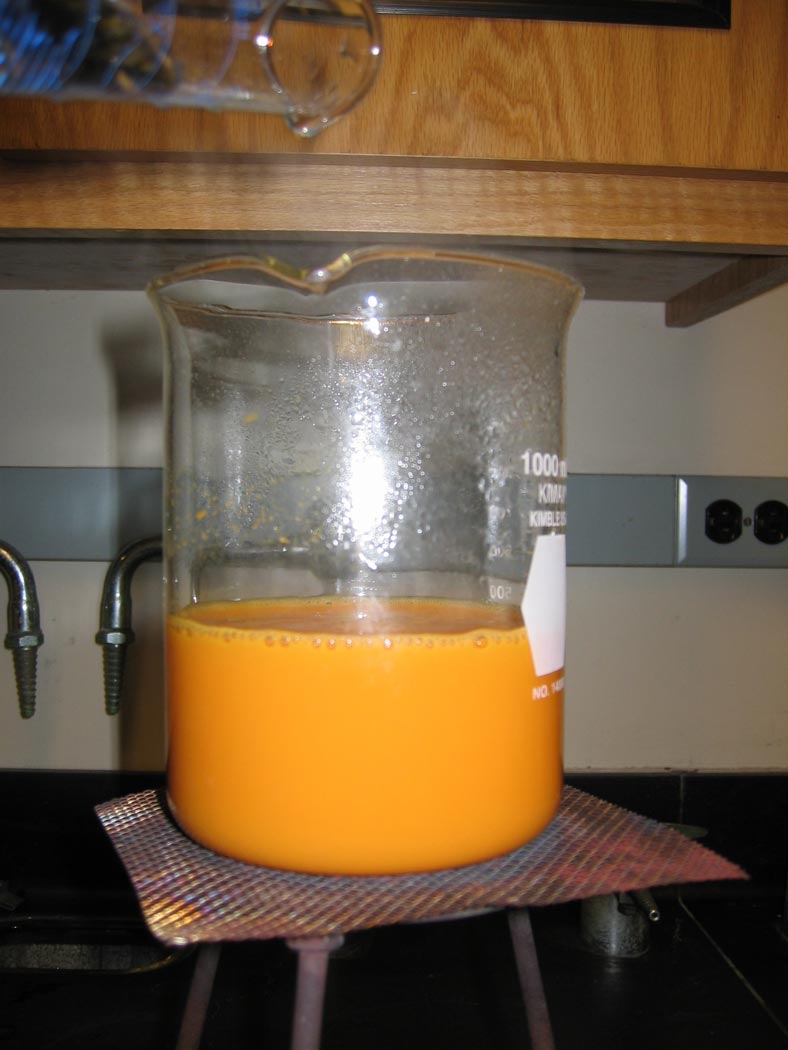
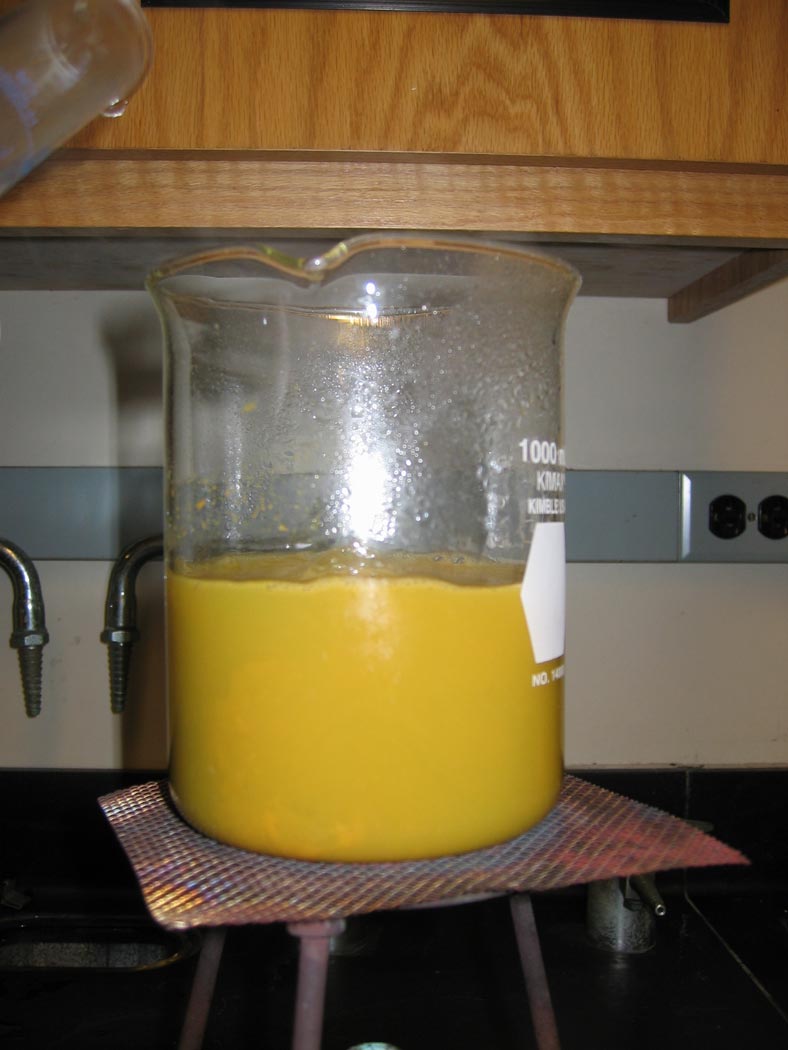
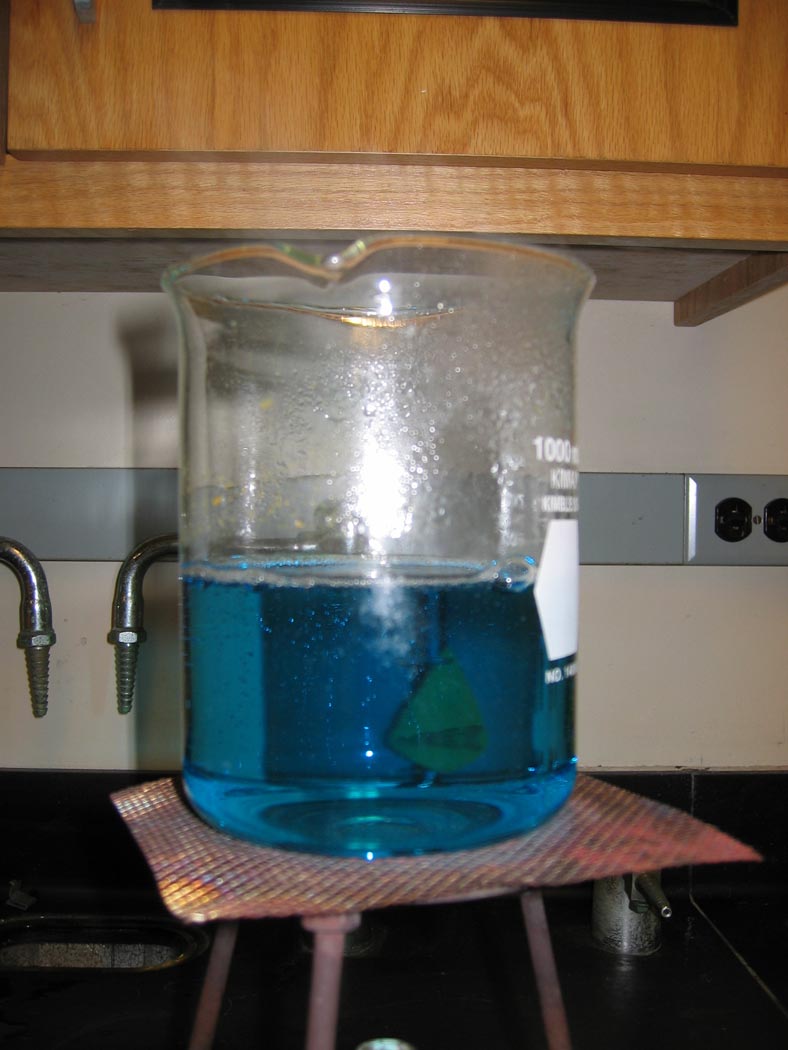
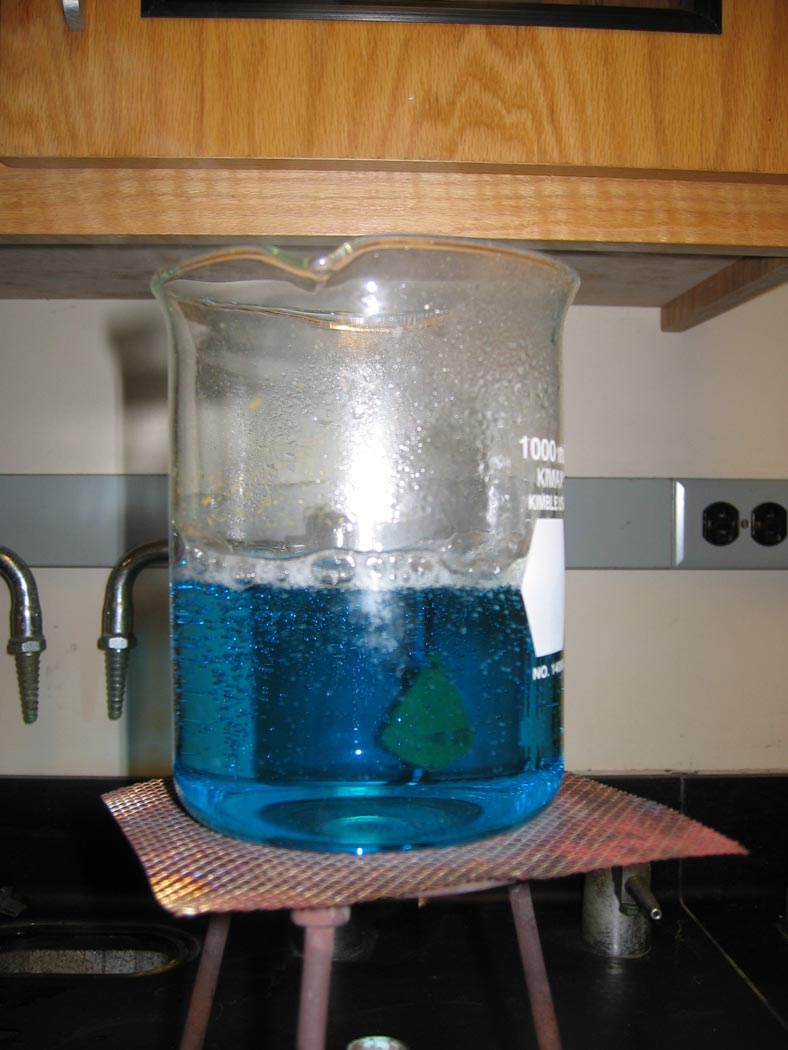
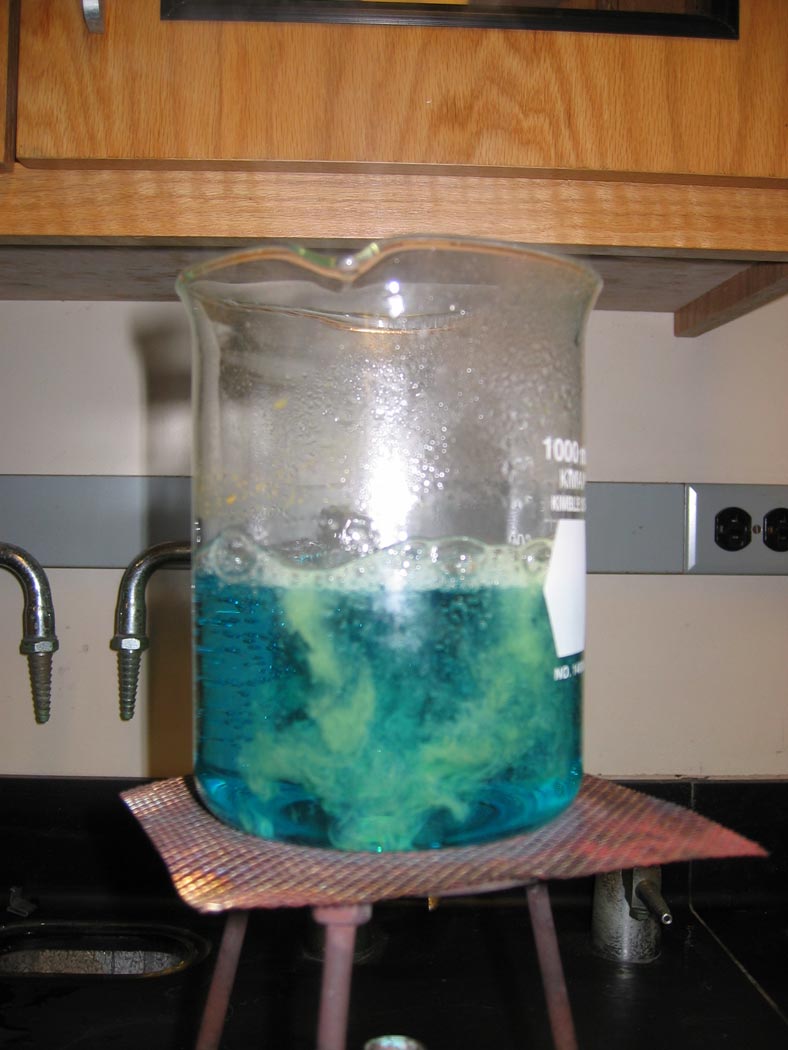
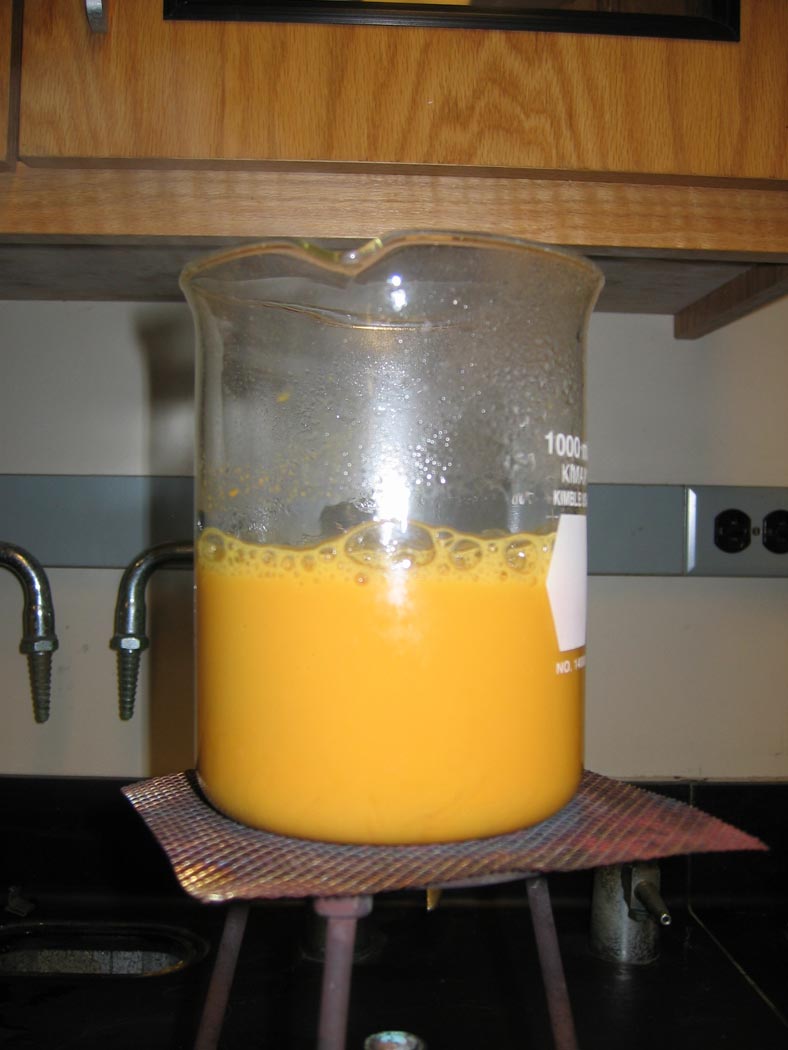
Ingredients: sodium potassium tartrate, copper(II) sulfate, hydrogen peroxide
Procedure: A partial recipe follows.
1. Prepare a solution of sodium potassium tartrate.
2. Prepare a solution of copper sulfate.
3. Mix solutions of sodium potassium tartrate and hydrogen peroxide.
4. Add copper sulfate solution and observe color change.
5. Add additional hydrogen peroxide to solution and observe the color change and change again!
Understanding: The addition of copper sulfate to a solution of sodium potassium tartrate and hydrogen peroxide initially produces a transparent blue solution through the formation of the soluble blue copper(II) tartrate complex ion
2 KNaC4H4O6(s) + Cu2+(aq) → [Cu(C4H4O6)2]2-(aq) (Blue) + 2 K+(aq) + 2 Na+(aq)
In hydrogen peroxide, the oxygen atom is in a -1 oxidation state, allowing the peroxide to act as either a reducing agent (through the oxidation of oxygen and formation of molecular oxygen) or an oxidizing agent (through the reduction of oxygen and formation of water).The presence of hydrogen peroxide in the solution leads to a dramatic change as Cu(II) is reduced to Cu(I), in the form of copper(I) oxide (unbalanced)
[Cu(C4H4O6)2]2-(aq) + H2O2(aq) → Cu2O(s) (Yellow) + CO2(g) + O2(g) + H2O(l)
The formerly transparent blue solution begins to bubble (through the formation of carbon dioxide and oxygen gases) followed by the formation of a yellow precipitate (the cuprous oxide) that renders the solution opaque.The further addition of hydrogen peroxide has an even more startling effect. The hydrogen peroxide acts as an oxidizing agent, transforming Cu(I) in the cuprous oxide to the soluble blue Cu(II) ion, which presumably binds with the tartrate to reform the complex ion (unbalanced)
Cu2O(s) + H2O2(aq) → Cu2+(aq) + H2O(l) + O2(g)
Most startling of all, the excess hydrogen peroxide leads to the rereduction of the blue Cu(II) ion and the reformation of the milky yellow solution of cuprous oxide. Like a boomerang the solution pushes out and away from cuprous oxide, through the formation of the blue copper ion, and then returns, through the reformation of cuprous oxide!Can we understand this effect through LeChatelier's Principle? The addition of the second portion of hydrogen peroxide introduces a stress on the system, pushing it away from its initial yellow point of equilibrium through the formation of the blue cupric ion. However, the reaction does not stay blue! The same peroxide solution introduces a stress on the competing reaction leading to the eventual reformation of the yellow cuprous oxide.
What is oxidized and what is reduced?
Question: In the two reactions accounting for the boomerang effect, identify the oxidation states of all atoms in each of the participating species. Note what is oxidized and what is reduced.You can check your answers here.